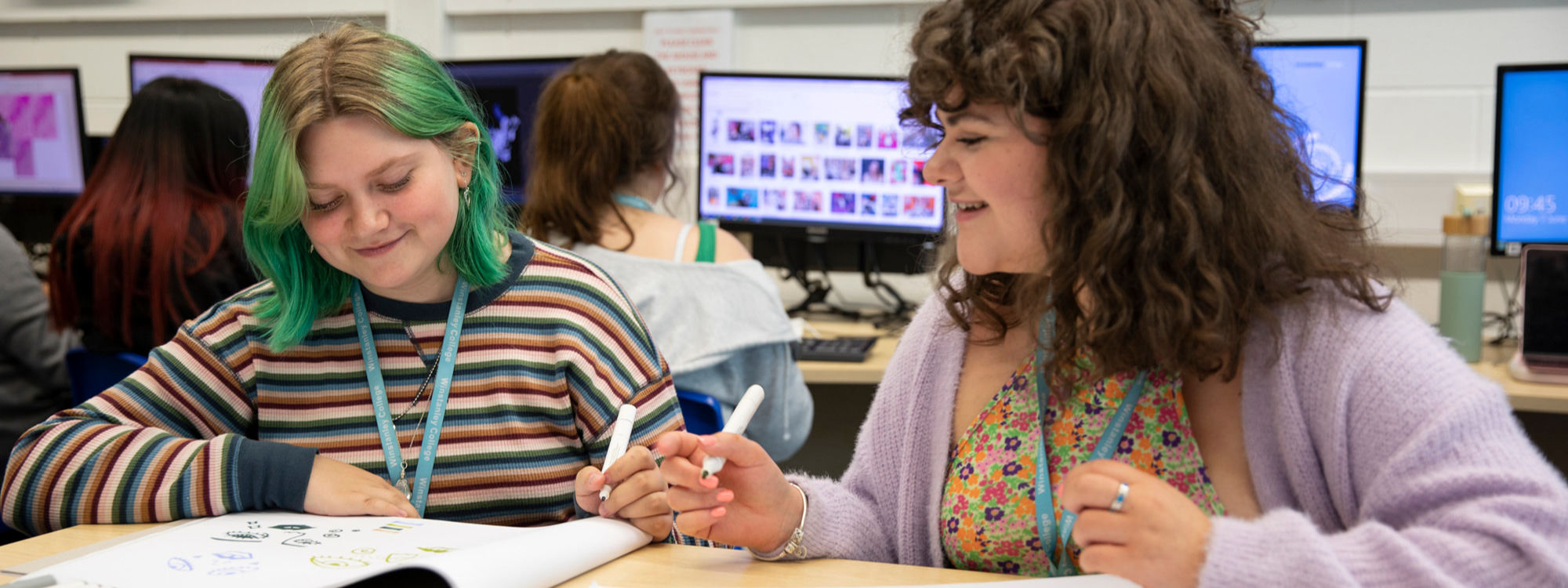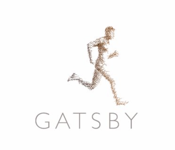- Home
- Curriculum
- Course Search
- Graphic Communication
Graphic Communication
A digital arts course combining traditional and contemporary approaches.
Why study Graphic Communication?
Are you a student who likes art and technology? Do you enjoy problem solving and planning?
In a creative and stimulating studio environment, supported by passionate staff with industry knowledge, we offer you a highly imaginative and challenging course. You will have the opportunity to explore a variety of traditional art and design approaches and contemporary digital processes. With high expectations, staff support you in delivering professional and high-quality finished outcomes that promote a message, sell a product, or evoke an emotion.
Our aim is to prepare you for an extensive range of opportunities in an ever-growing creative world, with transferable skills to many careers, not just in graphic design but also in architecture, gaming, and concept art.
We encourage you to take part in initiatives outside of the studio, providing platforms for your work to be seen in external exhibitions, competitions, and live briefs. Boundaries between related graphic processes are becoming increasingly blurred and as we guide and advise you on your work, we encourage you to be independent practitioners and in control of your own creativity. Student outcomes can be two and three dimensional and can take the form of printed work alongside cutting-edge digital technologies such as 3D printing and virtual reality.
2021 Exhibition
What will I study?
You will have the opportunity to explore visual identity, marketing and advertising, ux / user interface, printed publication, motion graphics, packaging, environmental design, graphics art & illustration.
Which exam board & how will I be assessed?
EDUQAS (WJEC) Coursework.
Component 1 – Personal Investigation (60%)
Component 2 – Externally Set Assignment (40%).
Internally marked and externally moderated.
Where could it take me?
A popular route to university or the workplace for our A-level students is via our thriving Art Foundation course. Many prestigious art institutions require students to have completed Art Foundation. In recent years students have progressed to graphics related courses at Goldsmiths (Design, Games Programming), Central St Martins (Graphics, Product), Kingston (Interior), Westminster (Illustration), Camberwell (Fine Art Photography, Graphic Design) and London College of Communication (Graphic Design).
Subject combinations
Most popular combinations are Art, Craft and Design, Photography, Textiles, English, Psychology, Sociology, Media, and Performing Arts courses.
What support is available?
When you enrol, we will make sure that you are receiving all the support you need, for example you may be entitled to extra time in your exams, help with written analysis/annotation or practical support from our two specialist technicians. Studios are always available in your independent study time.
What extracurricular activity is available?
In recent years students have enjoyed reference gathering trips to, Morocco, Berlin, Madrid, London, Liverpool, and Manchester.
Our links via the college website allow students to access specialist learning resources in their independent learning time, and we provide open access learning environments for art and design students.
Throughout the year, and across the courses and disciplines, there are opportunities to enter internal and external competitions and live briefs.
At the end of the second year, you also have the chance to present your highly creative and individual work in a summer exhibition.
Did you know?
- 77% of Winstanley Graphics students achieve A*- A.
- A popular destination for Graphics students is our Art Foundation course. Approximately 1 in 5 Art students across the department take this route to top universities or the workplace.













